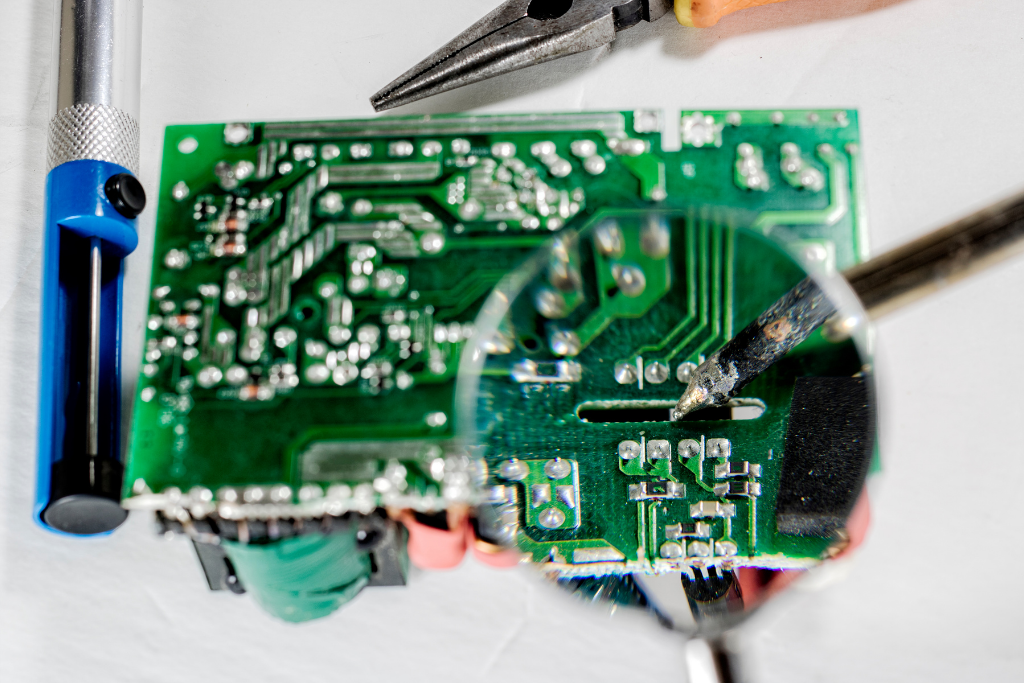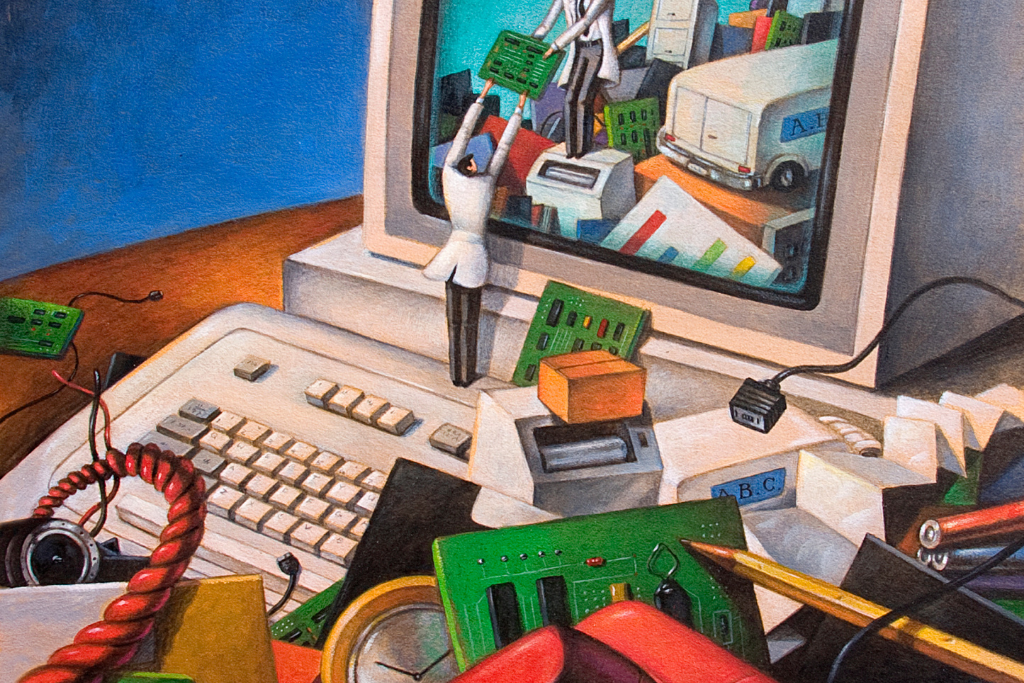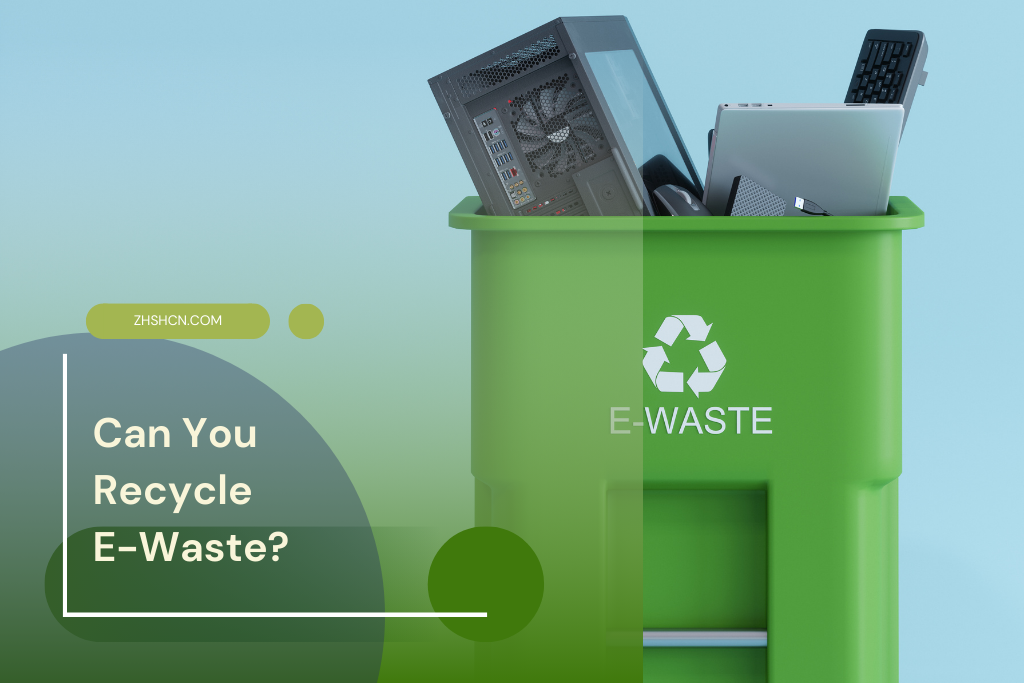Short Answer: Yes, e-waste can be recycled through a process that involves collection, sorting, dismantling, and material recovery.
Understanding Electronic Waste
Electronic waste, commonly called e-waste, encompasses an array of discarded electronic items. These could be spent on electronics at the end of their useful lifespan, such as mobile phones, home appliances, laptops, televisions, or computers. Nowadays, the relentless evolution and demand for newer, better, and faster technology are leading to the generation of electronic waste at an alarming pace. E-waste has quickly become the fastest-growing category of domestic waste globally, massively outpacing plastic or regular household refuse.
Electronic waste presents a unique subset of waste management due to the specific composition of these discarded items. The constituent elements range from relatively harmless materials such as plastic or metals to hazardous and harmful ones. Old electronic devices often contain substances like lead, mercury, cadmium, and certain flame retardants, potentially creating significant health hazards if mishandled. Moreover, these items are not readily bio-degradable, and unregulated disposal can have severe environmental ramifications. However, properly channeled, electronic waste is an abundant resource of valuable precious metals and rare earth minerals; the strategic importance in modern-day technology cannot be overstated.
The Environmental Impact of E-Waste
Accumulation of electronic waste poses an alarming threat to our natural environment. As discarded electronics decompose, they release toxic materials such as lead, mercury, and cadmium into the soil and water. This contamination degrades our lands and water bodies and poses severe health risks to humans and wildlife. Leakage of these harmful metals and chemicals alters the natural ecosystems, infiltrating the food chain and impacting biodiversity adversely.
Moreover, the incineration of electronic waste, a common practice in numerous regions, results in air pollution. Releasing hazardous compounds such as dioxins and furans contributes significantly to global warming. Furthermore, poor e-waste disposal practices exacerbate the loss of precious resources. Large volumes of metals, plastics, and other valuable materials embedded within electronic devices are lost, compelling increased raw material extraction and further exacerbating environmental degradation. In a nutshell, e-waste, if not properly managed, can have lasting and detrimental effects on our environment and health.

The Importance of Proper E-Waste Disposal
In the ever-evolving digital age, the increasing production and disposal of electronic goods, or e-waste, have become a pressing issue. The improper disposal of these electronic items leads to a loss of valuable materials and poses serious threats to the environment and human health. Many electronic devices contain toxic substances like lead, mercury, and cadmium, which if not managed correctly, can leak into the environment causing substantial damage.
Proper e-waste disposal holds significant value from an environmental conservation perspective. Adhering to appropriate disposal methods can greatly reduce the harmful impact on the environment. With our planet already grappling with numerous environmental issues, the least we can do is manage our electronic waste appropriately to mitigate further damage. Moreover, the correct disposal of electronic goods streamlines the recycling process, ensuring that valuable elements present in these items are effectively recovered and reused. Properly handling e-waste is a responsibility and an opportunity for us to demonstrate awareness and care for the environment.
The Process of E-Waste Recycling
E-waste recycling is a process that requires meticulous planning and expert execution. A systematic, methodical, and effective protocol is crucial given the diverse nature of electronic waste, containing a cocktail of hazardous elements. The process usually begins with collecting old, discarded, or obsolete electronics. Collection drives at community levels, drop-off points at retailers, and take-back programs by manufacturers play a significant role in the commencement of this process.
Once collected, the recyclables move onto the pre-processing stage. In this phase, manual labor is combined with automated systems to sort and disassemble the devices. Manual sorting helps salvage reusable components like batteries, circuit boards, and hard drives while dismantling the metal and plastic components. Simultaneously, hazardous items are segregated for proper disposal or treatment. An efficient pre-processing stage ensures subsequent procedures like shredding, separation, and disposal are successful.
Regulations Surrounding E-Waste Recycling
In the last decade, the global community has witnessed a rapid surge in the generation of electronic waste, commensurately necessitating effective regulatory measures to address the mounting issue. Recognizing this need, various international, national, and local bodies have instituted regulations to reduce, manage, and recycle e-waste in an ecologically responsible manner. Compliance with these regulations is imperative not only for the protection of the environment but also for reducing potential business risks such as fines and reputational damage.
Among several comprehensive rules about e-waste recycling, The Basel Convention, adopted by the United Nations Environment Programme (UNEP), is an international regulatory framework preventing the transfer of hazardous waste from developed to less developed countries. This convention intricately details measures for controlling transboundary movements of hazardous wastes and their disposal. National regulations include The Resource Conservation and Recovery Act (RCRA) in the U.S., which governs the disposal of solid and hazardous waste, including e-waste. Similarly, in Europe, the Waste Electrical and Electronic Equipment (WEEE) Directive provides a collection, recycling, and recovery system for all electronic goods. Comprehending and adhering to these regulations is vital for businesses producing, distributing, or disposing electronic goods.
What is Electronic Waste (E-Waste)?
Electronic waste or e-waste is discarded products with a battery or plug such as computers, televisions, smartphones, appliances, etc. It is a rapidly growing waste stream due to the fast pace of technological innovation.
How does E-Waste affect the environment?
E-waste contains toxic substances such as lead, mercury, and cadmium which, if improperly disposed of, can leak into the soil, water, and air, causing environmental problems and posing health risks to humans and animals.

Why is proper disposal of E-Waste important?
Proper e-waste disposal is essential to prevent environmental and human health damage. Additionally, e-waste contains valuable resources like gold, silver, copper, and rare metals that can be recovered and reused, reducing the demand for new raw materials.
What is the process of E-Waste recycling?
The process involves collection, transportation, sorting, dismantling, and material recovery. Firstly, e-waste is collected and transported to recycling facilities. It is then sorted into different categories and dismantled. The recovered materials are then recycled and reused.
What are the regulations surrounding E-Waste recycling?
Regulations vary by country and region but generally involve standards for collecting, transporting, and disposing of e-waste. These regulations aim to prevent illegal dumping, promote recycling, and protect human health and the environment.
What happens if the regulations for E-Waste recycling are not followed?
Organizations or individuals can face penalties such as fines or legal consequences if regulations are not followed. Additionally, improperly handled e-waste can cause environmental damage and health issues.
How can I ensure that my E-Waste is properly recycled?
You can ensure your e-waste is properly recycled using authorized e-waste recycling facilities and services. Many manufacturers and retailers offer take-back programs and community e-waste collection events where you can drop off your electronic waste.
What steps are being taken to improve E-Waste recycling globally?
Efforts are being made at various levels to improve e-waste recycling. This includes implementing stricter regulations, promoting awareness about e-waste, and introducing innovative recycling technologies. International cooperation and investment in recycling infrastructure are also key to improving e-waste recycling globally.
